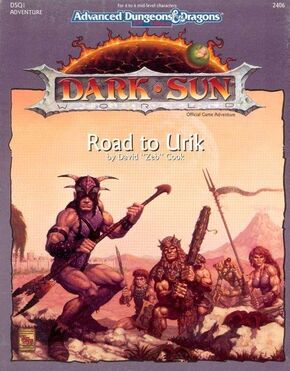In my A Game Per Year project, my goal has been to read one roleplaying game corebook for every year they’ve been published. However, I soon started to feel that it was hard to decipher how the games were really meant to be played. For this reason, I decided to start a parallel project, An Adventure Per Year, to read one roleplaying adventure for each year they’ve been published.

The period between 1987 and 1995 is the golden age of Dungeons & Dragons, defined by a vast panoply of intricately designed campaign worlds. Conveniently, it’s also the period when I first engaged with D&D as a child, so you can trust this to be a thoroughly objective assessment.
One of those campaign worlds is the post-apocalyptic, environmentally themed Dark Sun. It’s set in the dusty, harsh world of Athas where gladiators fight for the amusement of depraved sorcerer kings. Considering global warming, Dark Sun feels quite timely now with its backstory of a world turned into a sun-baked wasteland because of the greed of ancient wizards.
Road to Urik is an early adventure published for Dark Sun. The sorcerer-king of the city of Tyr has just been killed in a popular riot and the characters have to first organize a citizen army and then repel an attack from the city of Urik. The basic setup showcases the differences between Dark Sun and more traditional D&D worlds. It’s not just about aesthetics but also who we’re expected to sympathize with.
In a traditional fantasy story, heroes defend the good king from the forces of evil. In Dark Sun, the heroes protect the gains of a revolution from the aggression of a reactionary neighboring state.
Early Dark Sun adventures were published in an interesting format. You got two flipbooks, one for the DM and one of the players, as well as a booklet with a short story. The DM flipbook laid out the basics of the adventure in concise terms, with writing that’s distinctly more to the point than is typical in D&D material from this period. The player flipbook has illustrations, maps and even dialogue that the characters can overhear.
As the DM runs the adventure, they can ask the players to flip to a particular page to see the relevant cues.
I found the format rather nifty. I liked the stress on usability and the concrete informational logistics of the gaming table.
Battlesystem is a wargame TSR published as an adjacent product to D&D. Road to Urik integrates it into the action, featuring large battles that are expected to be run using Battlesystem rules. Battlesystem was retired soon afterwards because it failed to catch on so this aspect of the adventure is a historical curiosity.